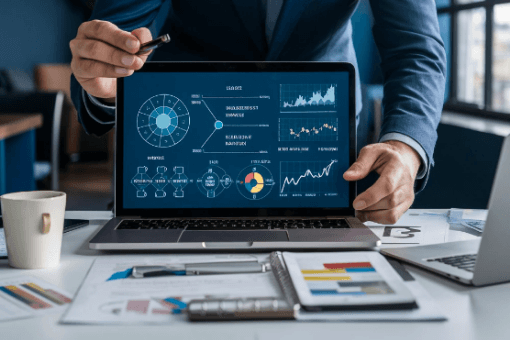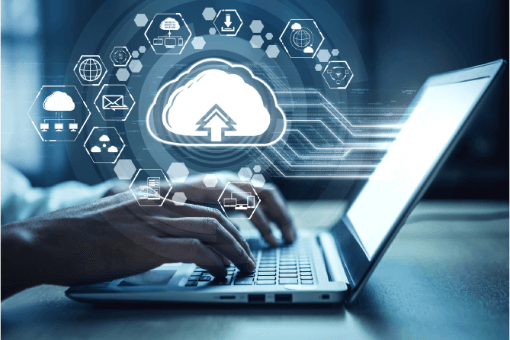Imagine asking a system, “What drove our 15% revenue spike in Q1?” and getting an instant narrative answer—no dashboards to hunt through, no SQL to master. That’s the promise of chat with data, powered by next-gen conversational BI tools, AI-driven data chat, data storytelling with chatbots, voice and chat data interfaces, and robust self-service analytics. In a recent Gartner survey, 85% of customer service leaders plan to explore or pilot conversational GenAI solutions, underscoring how rapidly businesses are embracing natural-language interfaces.
Table of Contents
The Evolution of Business Intelligence
Business Intelligence began its life in the early 2000s as a batch-driven, IT-managed function. Analysts would extract data from transactional systems, craft complex SQL queries, and build static dashboards in platforms like Power BI or Tableau. Monthly or quarterly slide decks circulated through inboxes, but by the time insights arrived, opportunities had often passed.
Recognizing these lags, organizations adopted self-service analytics in the 2010s. Tools empowered business users to drag-and-drop fields, filter data, and create visualizations on the fly—democratizing access but still demanding a basic understanding of data schemas and dashboard design. Line-of-business managers could explore sales trends or monitor KPIs without waiting for IT, yet they grappled with operational hurdles: knowing where data lived, how tables joined, and which metrics mattered most.
Today’s landscape demands more: instantaneous, context-rich answers delivered through the same chat interfaces employees already use. That’s where conversational BI tools step in, shifting from manual report generation to dynamic, question-driven insights.
What Is “Chat with Data”?

At its core, chat with data is a conversational layer on top of your data warehouse or analytics platform. Instead of navigating menus or constructing queries, users engage in a natural-language dialogue. Here’s how it works:
- Query interpretation: An NLP engine parses your question (“Which regions exceeded their sales targets in May?”).
- Data retrieval: The system translates the query into precise data calls against primary and secondary sources.
- Insight generation: Results are formatted as charts, tables, or concise narratives.
- Follow-up interaction: If clarity is needed, the interface asks clarifying questions, refining your request seamlessly.
This model delivers three key benefits:
- Usability: Anyone can ask questions—no coding or BI training required.
- Velocity: Answers appear in seconds, eliminating report backlogs.
- Engagement: Conversational formats (text, voice) meet users in their workflow.
By turning analytics into a dialogue, chat-based BI transforms passive dashboards into active collaborators.
Primary vs. Secondary Data in Conversational BI
 Conversational BI thrives on combining primary data and secondary data behind the scenes:
Conversational BI thrives on combining primary data and secondary data behind the scenes:
- Primary data represents raw transactional or operational records—sales orders, support tickets, inventory movements—providing the foundational facts.
- Secondary data encompasses derived metrics, benchmarks, and enrichments—year-over-year growth rates, industry indices, and customer satisfaction scores, adding context and perspective.
When you “chat” with your data, you don’t want to wait for separate dashboards or manual lookups. Advanced conversational BI platforms instantly merge raw figures with their contextual counterparts. As you type or speak a query, the system:
- Retrieves the relevant transactions (e.g., total bookings, invoice amounts).
- Calculates or fetches the associated metrics (e.g., margin percentages, budget variances).
- Presents both layers in a single, coherent response—numbers and narrative together.
This seamless interplay means users can follow up with natural-language questions—drilling from a high-level summary into the underlying transactions without ever switching interfaces. By shouldering all the data preparation, Chat with Data tools let frontline staff, finance teams, and executives focus solely on insight and decision-making.
Conversational BI Tools: Changing the Game

Traditional BI implementations center on pre-built dashboards and modeled schemas. In contrast, conversational BI tools invert that workflow:
- On-demand semantic modeling
These platforms dynamically interpret user queries, mapping natural-language terms to underlying data models and business glossaries. For example, when you ask for “churn rate,” the system knows whether to calculate it from subscription data or support records based on your defined metrics.
- Advanced NLP and entity recognition
Business jargon—“top deals,” “net promoter score,” “last twelve months”—is parsed accurately, even across synonyms and acronyms. Continuous learning refines the engine over time as users phrase questions differently.
- Interactive clarification loops
Ambiguities trigger follow-up prompts (“Do you want monthly revenue or cumulative YTD?”), ensuring precision before executing queries.
- Embedded delivery
Insights surface directly in collaboration platforms like Microsoft Teams or Slack, or within existing BI dashboards, so you never leave your workflow.
The result? Data teams spend less time building bespoke reports, and business users gain the freedom to explore metrics on demand. Analytics becomes as accessible as messaging a colleague.
Empowering Self-Service Analytics through Conversation
Even with self-service tools, nontechnical users often hit roadblocks: unfamiliar data models, mismatched filter logic, or uncertainty about metric definitions. Conversational interfaces remove these barriers, enabling true self-service analytics:
Data Storytelling with Chatbots
Beyond answering isolated queries, chatbots can weave multi-step analyses into a coherent narrative. For instance:
User: “Show me Q2 sales trends for North America.”
Bot: “Sales in North America grew 8% in Q2, driven by a 15% uplift in enterprise segment orders. Would you like to see a breakdown by product category?”
This guidance mirrors an expert analyst walking a user through a data story, making insights memorable and actionable.
Voice and Chat Interfaces for Data Interaction
No keyboard? No problem. Voice-enabled analytics let you pose questions like:
“Hey Data Assistant, what was our highest-margin product last month?”
Spoken queries deliver the same depth as typed ones, democratizing access for frontline staff, executives, and remote teams alike.
Challenges and Considerations
As with any emerging technology, rolling out conversational BI requires thoughtful planning:
- Data governance and security
Role-based access controls must ensure that only authorized users have access to sensitive data. Audit trails track who asked what and when.
- Model accuracy and training
NLP models need ongoing tuning to handle industry-specific terminology and evolving business lexicons.
- User adoption and change management
Even intuitive interfaces require training on best practices—framing questions effectively, interpreting follow-up prompts, and understanding response formats.
Addressing these considerations upfront ensures a smooth transition from static dashboards to dynamic dialogue.
The Future: BI Becomes Conversational by Default
Looking ahead, conversational BI will no longer be an optional add-on—it will become the default interface for analytics. As AI and NLP engines grow more sophisticated, every data point will be accessible through natural language, embedded across enterprise applications. The days of hunting through menus or memorizing metric definitions will fade, replaced by seamless, on-demand insights that empower decision-makers at every level.
How Data Semantics Can Help
Data Semantics brings the power of chat with data into your existing analytics ecosystem:
- Seamless integration
We layer conversational BI capabilities onto platforms like Microsoft Power BI, Snowflake, and Azure Synapse—leveraging your current investments and data models.
- Custom AI-driven data chat engines
Our NLP and LLM-based solutions translate business questions into optimized queries, returning narrative-driven insights with visuals or text.
- Embedded conversational interfaces
We deploy chatbots and voice assistants within Teams, WhatsApp, or custom portals, enabling self-service analytics directly in the flow of work.
- Governance and compliance
With ISO 27001 and SOC 2 Type 2-compliant practices, we ensure robust security, role-based access, and detailed audit logging for every conversational interaction.
- Ongoing tuning and support
From initial vocabulary setup to continuous model refinement and user training, our experts guide you through the entire journey, maximizing user adoption and ROI.
Partnering with Data Semantics accelerates your path to conversational BI, reducing decision latency, driving wider adoption, and unlocking actionable insights at scale.
Conclusion
The future of Business Intelligence lies in conversation. By embracing chat with data, conversational BI tools, AI-driven data chat, data storytelling with chatbots, voice and chat data interfaces, and self-service analytics, organizations can shift from reactive reporting to proactive insight generation. It’s time to turn analytics into a dialogue—empowering every user to ask, explore, and act on data instantly. Ready to make BI conversational? Let Data Semantics show you how.
FAQs
Q: What is conversational BI?
Conversational BI uses natural-language interfaces—text or voice—to query data and receive insights without dashboards or code.
Q: Which platforms support chat with data?
Data Semantics integrates conversational layers with Microsoft Power BI, Snowflake, Azure Synapse, Databricks, and other major analytics platforms.
Q: How do you ensure data security?
We enforce role-based access, encryption, and ISO 27001/SOC 2 compliance, with full audit trails of every interaction.
Q: Do users need special training?
Most users can start asking basic questions immediately; advanced scenarios benefit from brief onboarding and periodic model tuning.
Q: Can conversational BI handle complex queries?
Yes, our AI engines support multi-step analyses and follow-up clarifications, delivering deep insights in natural-language narratives.













